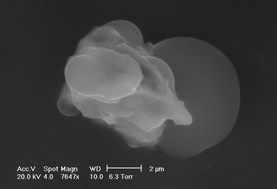Hygroscopic properties of the workroom aerosol in aluminium smelter potrooms: a case for transport of HF and SO2 into the lower airways
Abstract
The hygroscopic behaviour of individual aerosol particles from workplaces in a primary aluminium smelter was investigated by


 Please wait while we load your content...
Please wait while we load your content...